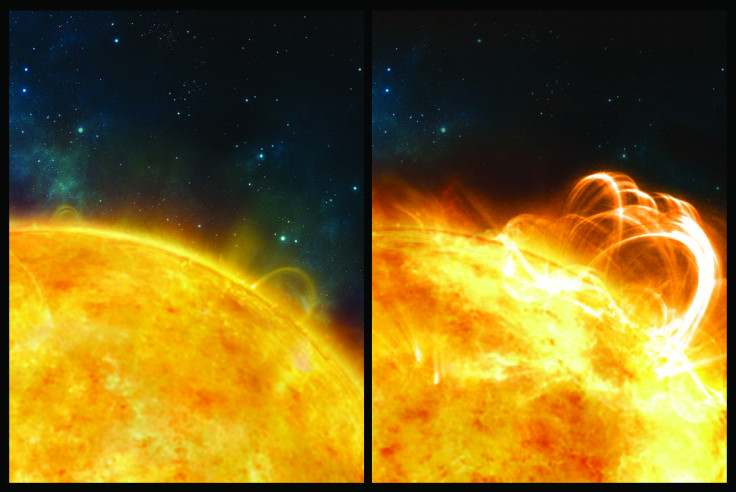Sun 'capable' of superflare with energy of a billion megaton bombs, spelling disaster for Earth

The sun has the potential to release '"superflares" 1,000 times greater than those ever recorded – an event that would be disastrous to life on Earth. The good news is that based on previous observations, an event of this kind is extremely unlikely, scientists have said.
The team from the University of Warwick said there were similarities between the solar flares from the star KIC9655129 and our own. The star, observed by Nasa's Kepler space telescope, produces flares with wave patterns similar to those found coming from the sun.
KIC9655129, which is also located in the Milky Way galaxy, is known to produce superflares. These flares are massive – normal solar flares have an energy equivalent to around 100m megaton bombs. In comparison, a superflare has the potential to release the energy of a billion megaton bombs. Normal flares have the potential to wreak havoc on Earth, knocking out communication systems and causing blackouts from the geomagnetic storms they produce. Superflares would therefore be disastrous, researchers said.
Chloë Pugh, lead researcher on the study that has been published in the Astrophysical Journal Letters, said: "Stars very similar to the sun have been observed to produce enormous flares, called superflares. To give us a better indication of whether the sun could produce a catastrophic superflare, we need to determine whether the same physical processes are responsible for both stellar superflares and solar flares."
Solar flares normally consist of a series of regular pulses that resemble waves. The wavelength relates to properties of the region from where the flare came. Sometimes, solar flares contain multiple waves on top of one another. The team detected wave patterns in the light curve coming from KIC9655129, with their models indicating the same physical processes are involved in both solar flares and superflares.
"We have found evidence for multiple waves, or multiple periodicities, in a stellar superflare, and the properties of these waves are consistent with those that occur in solar flares," Pugh said. In terms of the impact on Earth, she said: "If the sun were to produce a superflare, it would be disastrous for life on Earth; our GPS and radio communication systems could be severely disrupted and there could be large-scale power blackouts as a result of strong electrical currents being induced in power grids. Fortunately, the conditions needed for a superflare are extremely unlikely to occur on the sun, based on previous observations of solar activity."
EMBARGO 00.01 WEDNESDAY 3RD DEC
© Copyright IBTimes 2025. All rights reserved.






















